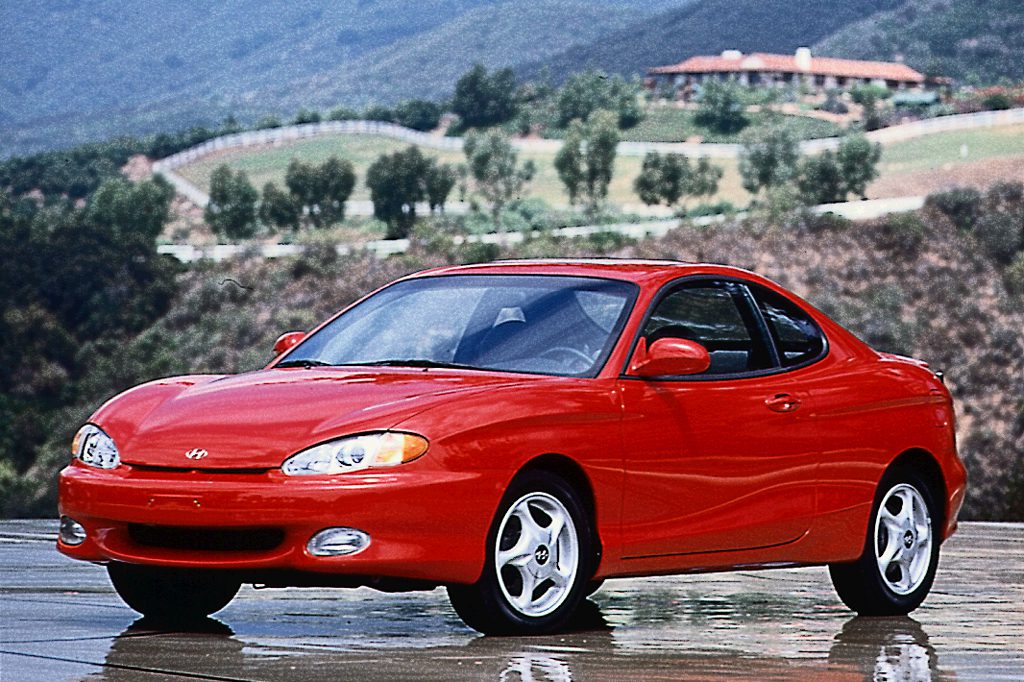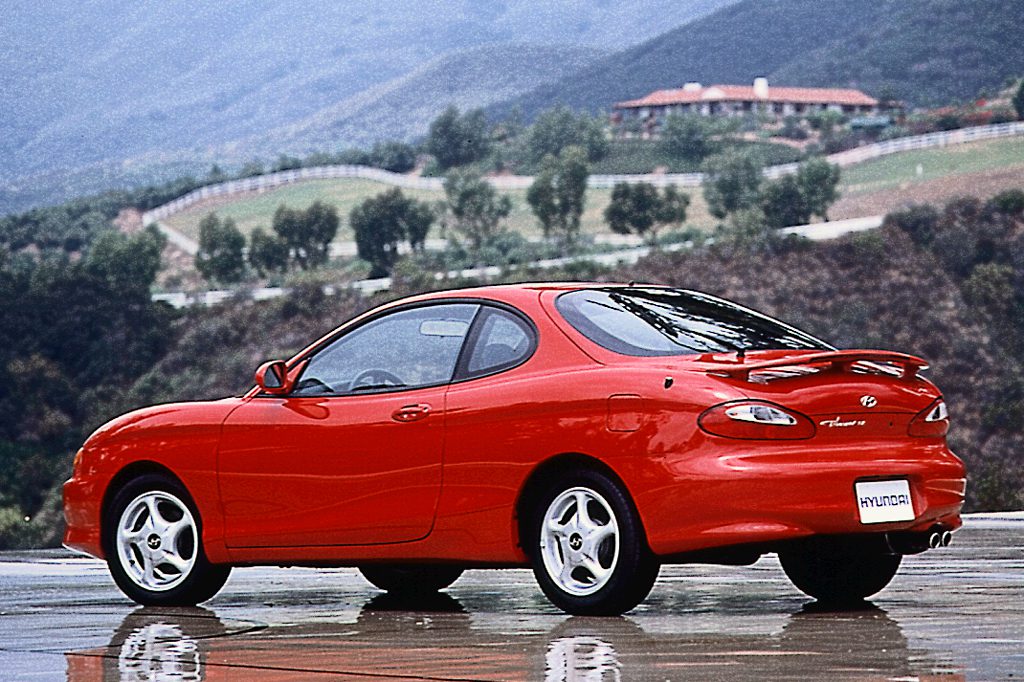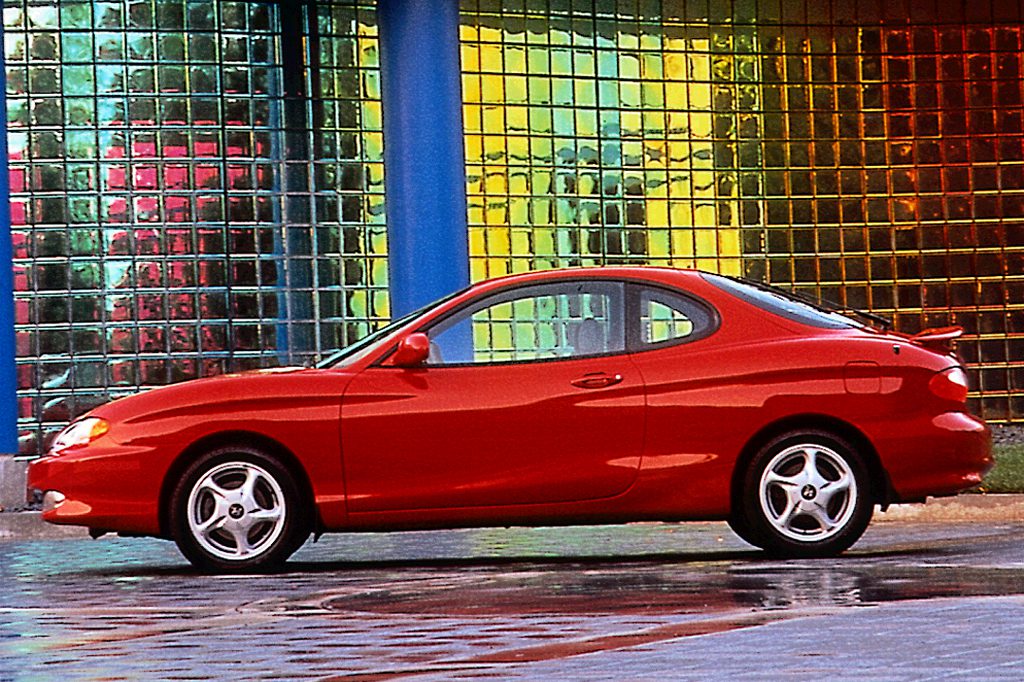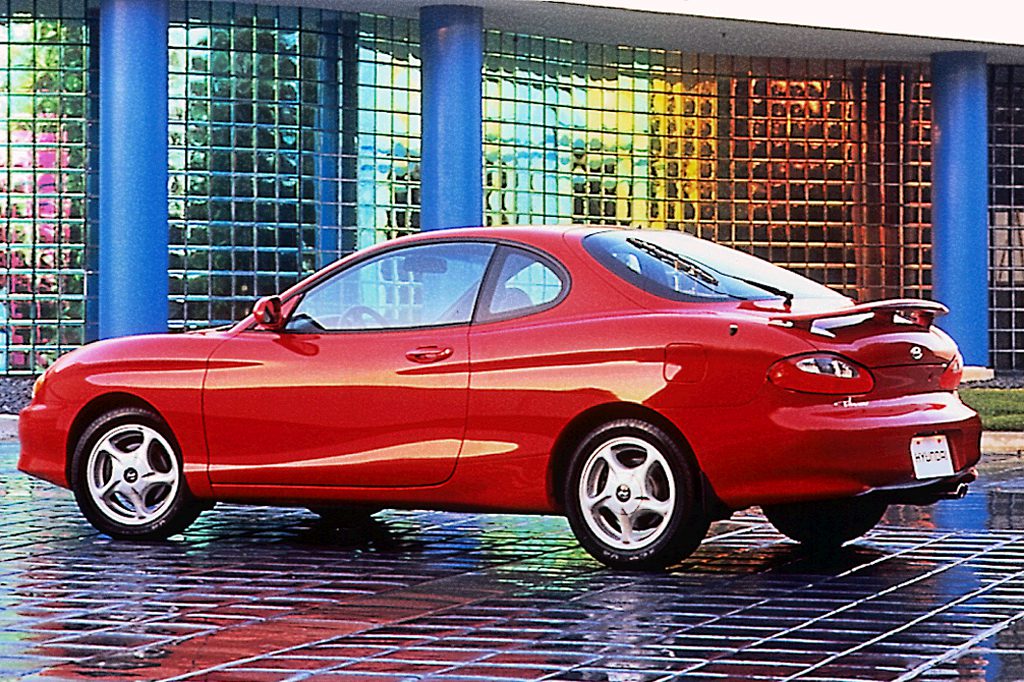| Sporty/performance car; Built in South Korea |
|
|
| Good condition price range: $1,200 – $2,800* |

1998 Hyundai Tiburon

1998 Hyundai Tiburon

1998 Hyundai Tiburon

1997 Hyundai Tiburon interior

1997 Hyundai Tiburon
| Pros: |
|
| Cons: |
|
Attractively and distinctively styled, the Tiburon can be a good bargain-priced alternative to Ford’s Probe as well as the Nissan 200SX. Although Tiburon ranks far ahead of the old Scoupe, however, it does no more than score dead even with other small sporty coupes, and behind some of them.
Overview
Hyundai’s replacement for the Scoupe sport coupe was based on the Elantra sedan, but rode a 3-inch shorter wheelbase and got its own hatchback styling. Two engines were available. Base Tiburons used the Elantra’s 1.8-liter dual-cam 4-cylinder, rated at 130 horsepower. The upscale FX edition got a 2.0-liter four, producing 140 horses. A 5-speed manual gearbox was standard, and the optional 4-speed automatic transmission had Normal and Power shift modes. Tiburon’s independent coil-spring suspension was essentially the same as the setup on the Elantra. Also borrowed from Elantra were the power rack-and-pinion steering and the front-disc/rear-drum brakes. A Tiburon FX could have optional antilock braking, with rear discs instead of drums. Dual front airbags were standard, along with air conditioning, power windows, remote-control mirrors, a tachometer, tilt steering wheel, AM/FM cassette stereo, 50/50 split folding rear seat, and a roller-blind cargo cover.
Yearly Updates
| 1998 Tiburon Tiburon lost its weaker engine, giving both models the 140-horsepower, 2.0-liter 4-cylinder. |
| 1999 Tiburon A power sunroof and CD player, previously available only on the upscale FX, became optional on the base coupe as well. |
| 2000 Tiburon Facelifted for 2000, Tiburon lost its uplevel FX model, leaving only a base coupe with a revamped nose, including standard fog lamps and a new-look tail. All-disc brakes and 15-inch alloy wheels were now standard, as were power windows. |
| 2001 Tiburon For 2001, Tiburon got a standard rear spoiler. Also new were metal-look interior trim and revised front bucket seats with manual 6-way driver’s adjustment, new engine mounts, and a stiffer dashboard. |
